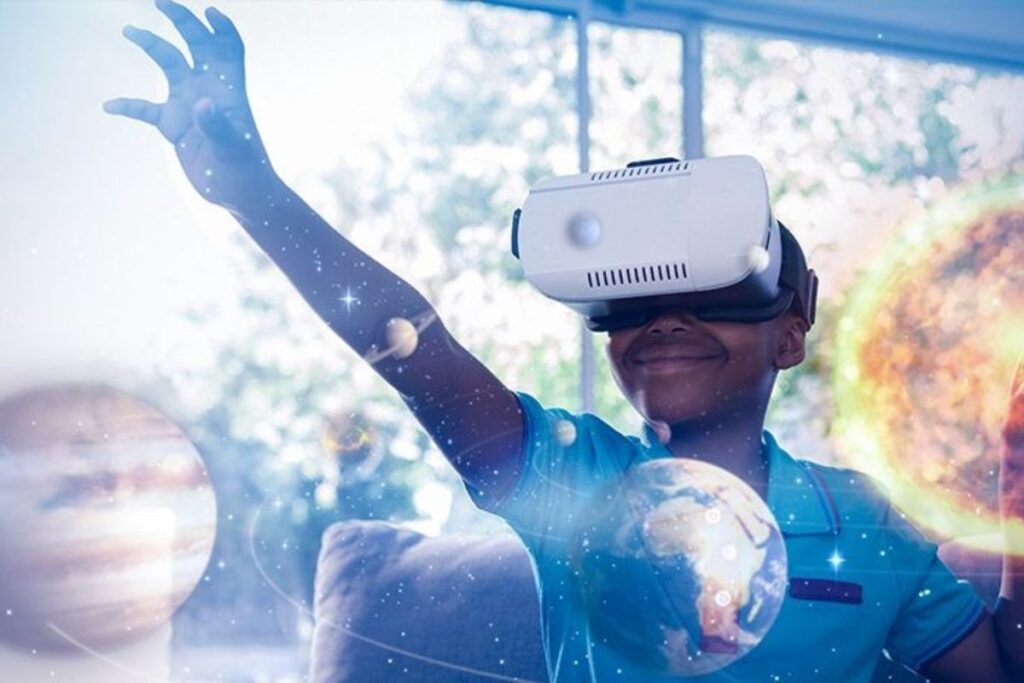Source – www.linkedin.com
Transforming Traditional Learning Methods
Once synonymous with pens, binders, and chalkboards, the back-to-school season is now embracing cutting-edge technology: virtual reality (VR). The immersive technology, which simulates interactive, computer-generated environments, is increasingly making its way into educational institutions worldwide. VR offers a transformative approach to teaching and learning, moving beyond traditional textbooks and lectures to provide students with engaging, hands-on experiences. This technology is being integrated across various educational levels, from kindergarten to higher education, as institutions seek to harness its potential to enhance learning.
VR typically involves wearing a head-mounted display that tracks the user’s movements, creating a sensation of physical presence in a virtual space. As VR technology becomes more advanced and affordable, its application in education is expanding. It is being explored for diverse purposes, including STEM education, medical training, vocational skills, and special education, promising a more immersive and effective learning experience.
The Current Impact and Future Potential of Virtual Reality in Education
Recent research by PwC has highlighted the significant advantages of VR in educational settings. The study revealed that learners using VR are four times faster to train than those in traditional classrooms and exhibit 275% greater confidence in applying their skills. Although VR is not expected to completely replace traditional teaching methods or online learning, it is increasingly seen as a valuable component of a blended learning approach.
Educators are enthusiastic about incorporating VR into their teaching strategies. Approximately 70% of teachers express a desire to use VR to simulate relevant experiences and enhance their lessons. The technology’s ability to offer immersive simulations enables students to interact with complex concepts and environments that are otherwise inaccessible. For instance, VR can provide realistic training scenarios in fields such as medicine and aviation, or allow students to explore historical sites and cultural events virtually.
Addressing Challenges and Preparing for the Future
Despite its potential, integrating Virtual Reality into educational settings presents several challenges. Effective implementation requires careful planning and consideration. Educators need to define clear learning objectives, ensure VR content aligns with the curriculum, and seek cost-effective solutions for VR hardware and software. Pilot testing and ongoing reflection are crucial to refine the VR experience and maintain its relevance to educational goals.
Preparing educators for VR integration is also essential. Pedagogical training can help teachers effectively incorporate Virtual Reality into their lessons. Strategies such as gamification, cooperative learning, and inquiry-based learning can enhance the effectiveness of VR in classrooms. Various tools and platforms, like CoSpaces Edu, A-Frame, Engage, and Nearpod, offer opportunities for creating and customizing VR content to support different educational needs.
Looking ahead, advancements in Virtual Reality technology are expected to bring even greater immersion and realism to educational experiences. Future VR applications may include detailed simulations of historical events, virtual laboratories for scientific experiments, and global collaborative learning environments. As VR becomes more integrated into educational practices, it promises to revolutionize learning by providing personalized, interactive experiences that cater to individual learning styles and needs.
In summary, virtual reality holds immense potential to transform education by offering engaging, immersive learning experiences. As technology continues to evolve, educators and institutions are poised to leverage VR to enhance student engagement, support diverse learning needs, and prepare students for success in an increasingly digital world.
Also Read: Navigating the Future of Education: The Impact of Technology on Learning









